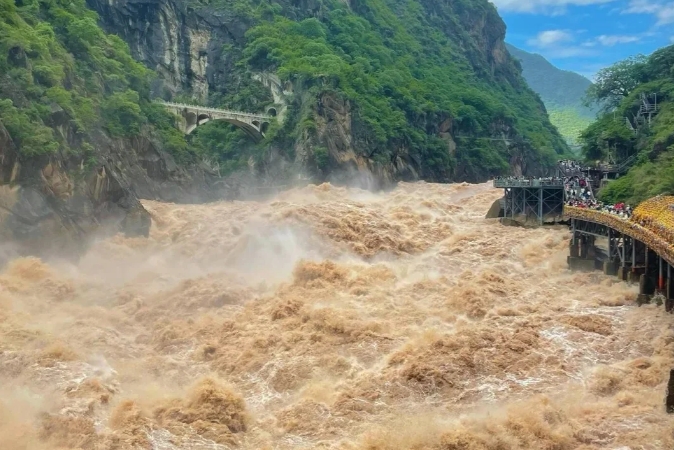
Tiger Leaping Gorge, located in Hutiaoxia Town (虎跳峡镇), Shangri-La City (香格里拉市), Diqing Tibetan Autonomous Prefecture (迪庆藏族自治州), Yunnan Province, is a world-famous gorge formed by the Jinsha River (金沙江) cutting through the mountains over millennia. It is one of the deepest gorges in the world and ranks among China’s top ten most beautiful gorges. Known for its majestic scenery and challenging hiking trails, it attracts countless adventurers and nature enthusiasts. Below is a detailed hiking guide to help you embark on an unforgettable journey through Tiger Leaping Gorge.
Overview of Tiger Leaping Gorge (虎跳峡)
Tiger Leaping Gorge stretches approximately 23 kilometers with a drop of 213 meters and an elevation difference of over 3,596 meters. The gorge is divided into three sections: Upper Tiger Leaping (上虎跳), Middle Tiger Leaping (中虎跳), and Lower Tiger Leaping (下虎跳). The gorge is flanked by snow-capped mountains—Haba Snow Mountain (哈巴雪山) to the north and Yulong Snow Mountain (玉龙雪山) to the south. The elevation difference between the river and the mountains ranges from 3,700 to 3,900 meters, making it over 1,500 meters deeper than the Grand Canyon in the United States. The grandeur of the gorge is truly breathtaking.
Scenic Highlights
Upper Tiger Leaping (上虎跳)
- Tiger Leaping Stone (虎跳石): The most famous landmark in Upper Tiger Leaping, this 13-meter-high boulder sits in the middle of the river. Legend has it that a tiger once leaped across the river using this stone, hence the name. The rushing waters on either side create massive waves, offering a spectacular sight.
- Narrowest Section: The narrowest part of the gorge, with the river only 20 meters wide. The Jinsha River’s turbulent waters, squeezed between towering cliffs, showcase nature’s immense power.
- Viewing Platform: A specially designed platform allows visitors to experience the roaring river up close. The platform extends slightly over the river, with transparent glass flooring offering a thrilling view of the rushing water below.
- Hiking Trail: A well-maintained boardwalk suitable for visitors with limited time who still want to enjoy the gorge’s beauty.
- Tiger Sculpture: A iconic spot for photos, commemorating your visit to this magnificent natural wonder.
Middle Tiger Leaping (中虎跳)
- Tiger Leaping Stone (虎跳石): Another iconic boulder, said to be the tiger’s stepping stone. The turbulent waters around it create a dramatic scene.
- Manitianxing Beach (满天星滩): Known for its rocky rapids and turbulent waters, this section is one of the most thrilling parts of the gorge, popular among rafting enthusiasts.
- Yixiantian (一线天): A narrow passage carved into the cliff, offering a stunning view of the river winding like a dragon between the towering peaks.
- Guanyin Waterfall (观音瀑): A waterfall cascading from the Haba Snow Mountain, named for its resemblance to the goddess Guanyin. Its serene beauty contrasts with the gorge’s ruggedness.
- Brave’s Ladder (勇者天梯): A 168-step ladder built along the cliff, offering a thrilling yet secure climb. It’s a classic part of the hiking route, suitable for adventurous hikers.
Lower Tiger Leaping (下虎跳)

- High Gorge, Calm Lake (高峡出平湖): Formed after a landslide during the 1996 Lijiang earthquake, this section features a wide, calm river, contrasting sharply with the turbulent waters of Upper Tiger Leaping.
- Smooth Stone Slab (滑石板): An 800-meter-long, 250-meter-wide smooth stone slab at an 85-degree angle, once a perilous path into the gorge. Though no longer a main route, its unique formation attracts many visitors.
- Expansive River and Snowy Peaks: Visitors can enjoy a panoramic view of the Jinsha River, with the Yulong and Haba Snow Mountains in the background. The calm waters here contrast with the rapids of Middle Tiger Leaping.
- Exit Scenery: Near the gorge’s exit, this spot offers a final, breathtaking view of the gorge and the two snow-capped mountains, providing a perfect conclusion to the journey.
Transportation Guide
Public Transport
- From Lijiang: Two daily buses run from Lijiang Bus Station to Hutiaoxia Town (虎跳峡镇), taking about 90 minutes. This is an economical option for budget-conscious travelers.
Private/Shared Cars
- From Lijiang: Shared cars cost 35-50 RMB per person, while private car prices vary based on vehicle type and itinerary. Shared cars are economical and allow you to meet fellow travelers, while private cars offer more flexibility.
- From Shangri-La: Similar options are available, with prices comparable to those from Lijiang. Private or shared cars are ideal for those seeking convenience and time efficiency, especially for groups.
Accommodation Recommendations
Near Upper Tiger Leaping
- Hutiaoxia Town Inns: Located in the town center, these inns offer basic amenities and affordable prices (100-200 RMB per night), suitable for budget travelers.
- Scenic B&Bs: Some B&Bs offer stunning views of the gorge, with prices ranging from 300-500 RMB per night, ideal for those seeking a unique experience.
Near Middle Tiger Leaping
- Halfway Guesthouse (中途客栈): A popular stop for hikers, offering meals and route advice. Dorm beds cost 50-80 RMB, while private rooms are 200-300 RMB.
- Teacher Zhang’s Guesthouse (张老师客栈): Located near key attractions, this guesthouse is run by a hospitable owner familiar with the area. Prices are similar to Halfway Guesthouse.
Near Lower Tiger Leaping
Accommodation options are limited. Consider staying in Hutiaoxia Town or nearby农家乐 (farm stays), which offer simple lodging and meals for 150-250 RMB per night.
Hiking Routes and Suitable Groups
High Road Hiking Route
- Route: Naxi Family Guesthouse (纳西雅阁) → 28 Bends (28 道拐) → Tea Horse Guesthouse (茶马客栈) → Halfway → Longshui Cave Waterfall (龙水洞瀑布) → Teacher Zhang’s Guesthouse → Middle Tiger Leaping.
- Suitable For: Experienced hikers with good physical fitness. The 6-8 hour hike offers stunning views and a comprehensive experience of the gorge.
Middle Tiger Leaping Classic Route
- Route: Halfway → Longdong Waterfall (龙洞瀑布) → Teacher Zhang’s Guesthouse.
- Suitable For: Casual hikers. The 3-4 hour hike is relatively easy, offering a taste of Middle Tiger Leaping’s beauty.
Challenging Middle Tiger Leaping Route
- Route: Halfway → Longdong Waterfall → Tina’s → Brave’s Ladder → Yixiantian → Teacher Zhang’s Guesthouse.
- Suitable For: Fit hikers. The 5-6 hour hike covers key attractions like Brave’s Ladder and Yixiantian, offering a more challenging experience.
Lower Tiger Leaping Route
- Route: A gentle 2-3 hour hike along the river, suitable for casual visitors. Enjoy the calm waters and scenic views.
Travel Tips
Gear Preparation
- Footwear: Wear anti-slip hiking shoes for safety on uneven and steep trails.
- Hiking Poles: Help reduce leg strain and improve balance, especially on uphill and downhill sections.
- Backpack: Choose a well-fitted backpack to carry essentials like water, food, and first aid supplies.
Sun Protection
- The strong UV rays in the gorge require proper sun protection. Wear a wide-brimmed hat and apply high-SPF sunscreen to exposed skin.
Avoid the Rainy Season
- Best Time to Visit: April-May and September-October, when the weather is stable and the scenery is at its best. Avoid June-August, the rainy season, due to increased risks of landslides and poor trail conditions.
Conclusion
Tiger Leaping Gorge offers a thrilling and scenic hiking experience, with routes suitable for all levels of adventurers. From the narrow and turbulent Upper Gorge to the challenging Middle Gorge and the serene Lower Gorge, each section provides unique landscapes and unforgettable views. Whether you’re seeking adrenaline-pumping trails or a peaceful riverside walk, the gorge has something for everyone. Remember to prepare well, stay safe, and respect the environment. This natural wonder is a must-visit for anyone looking to explore Yunnan’s stunning beauty and rich cultural heritage.

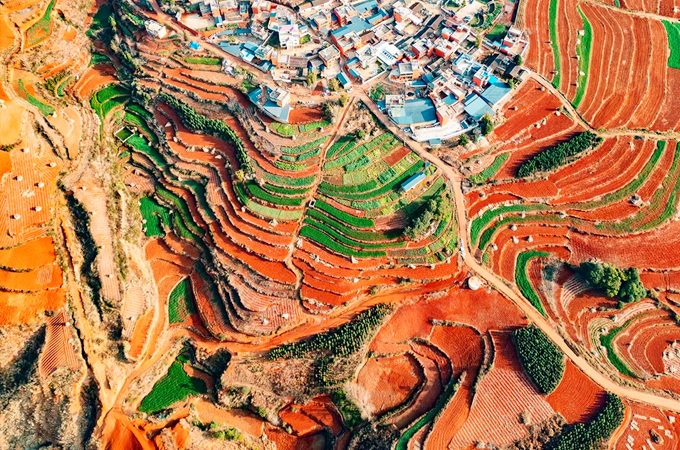
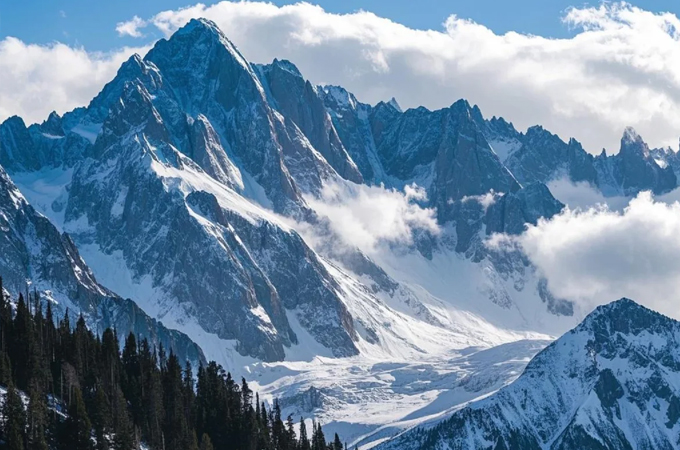
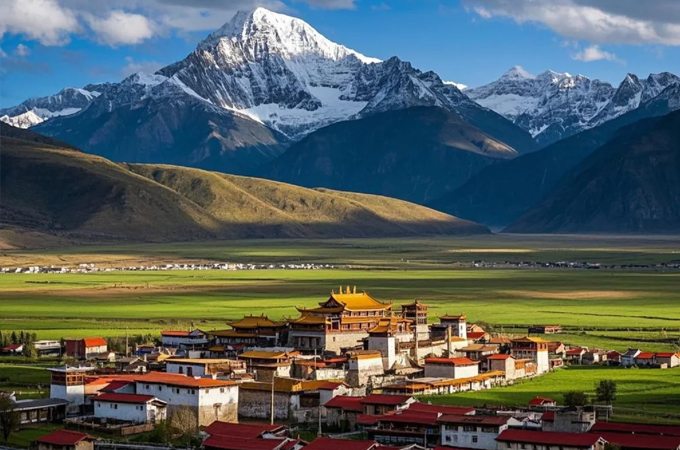
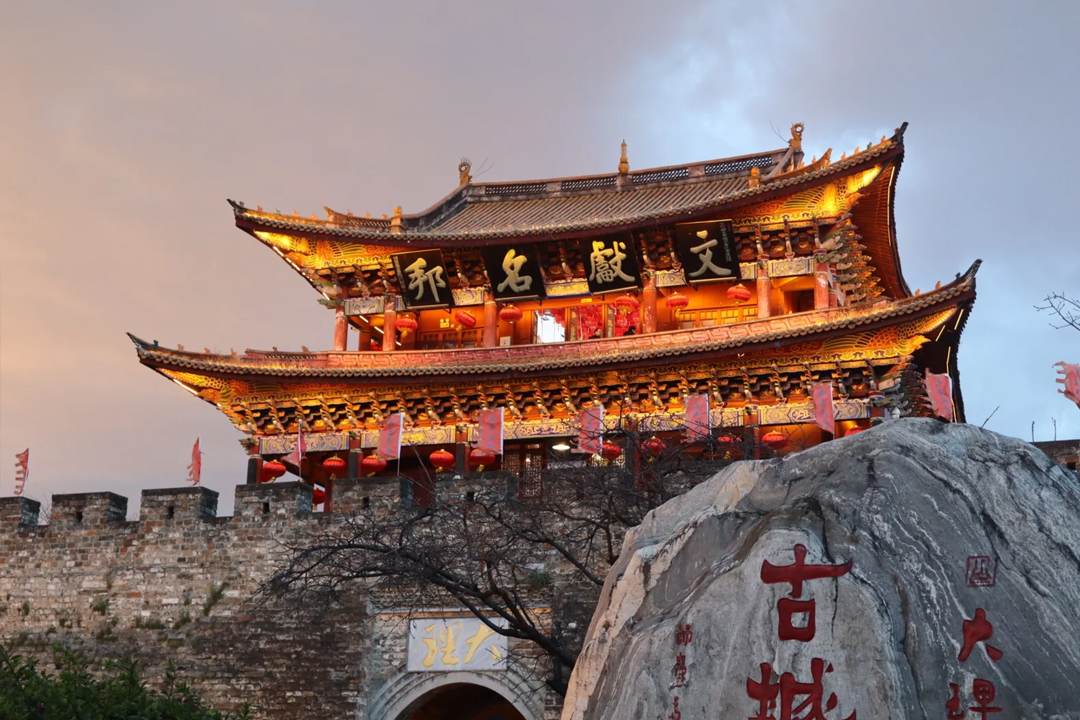
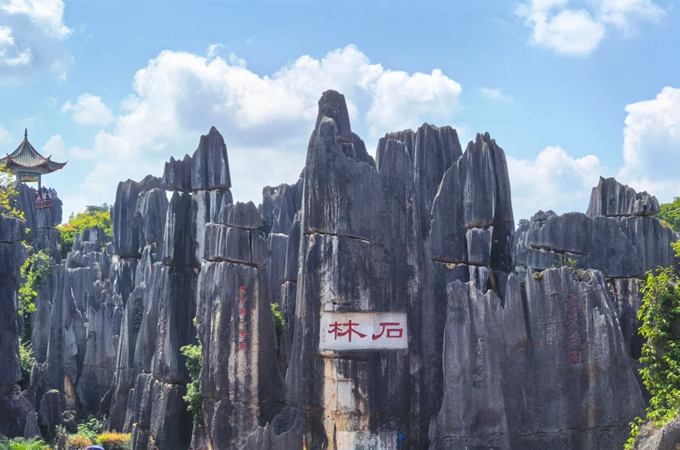

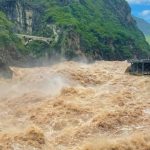
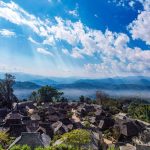
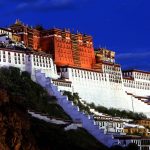


Leave a comment: